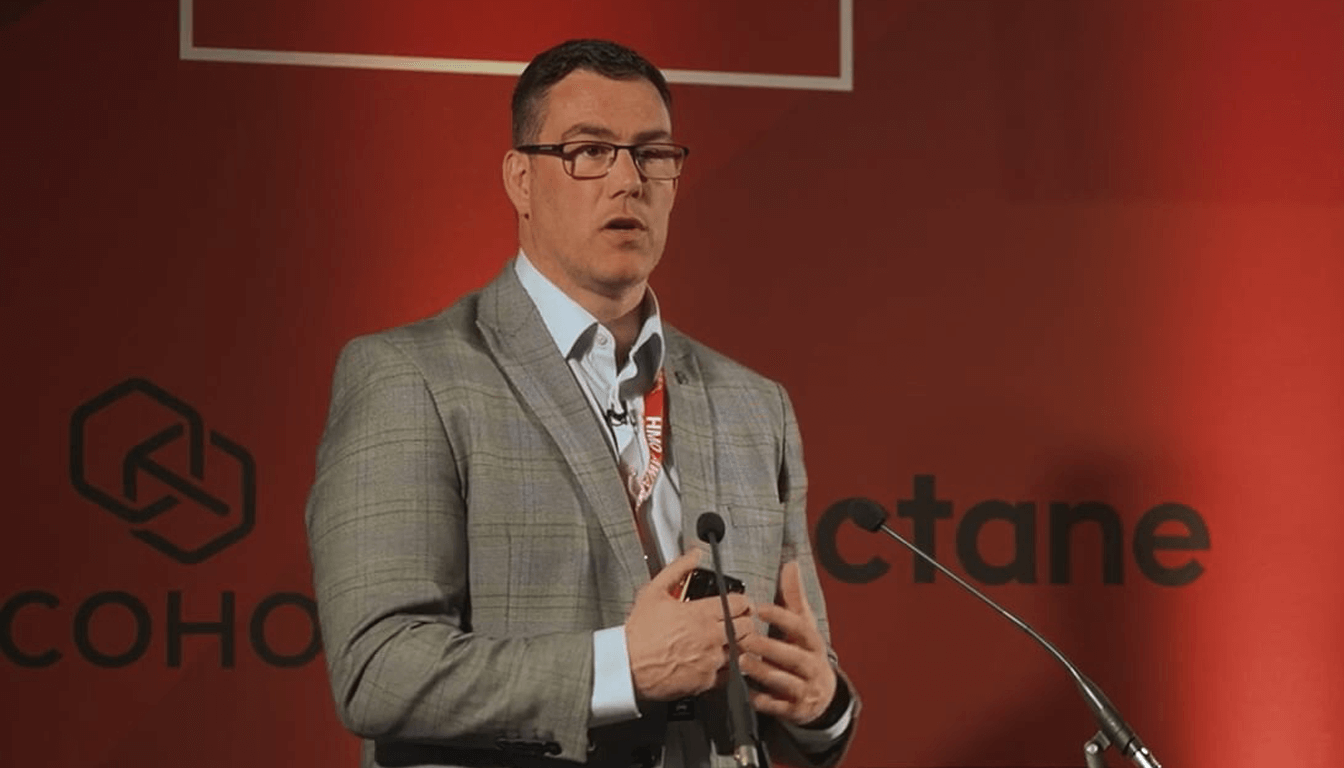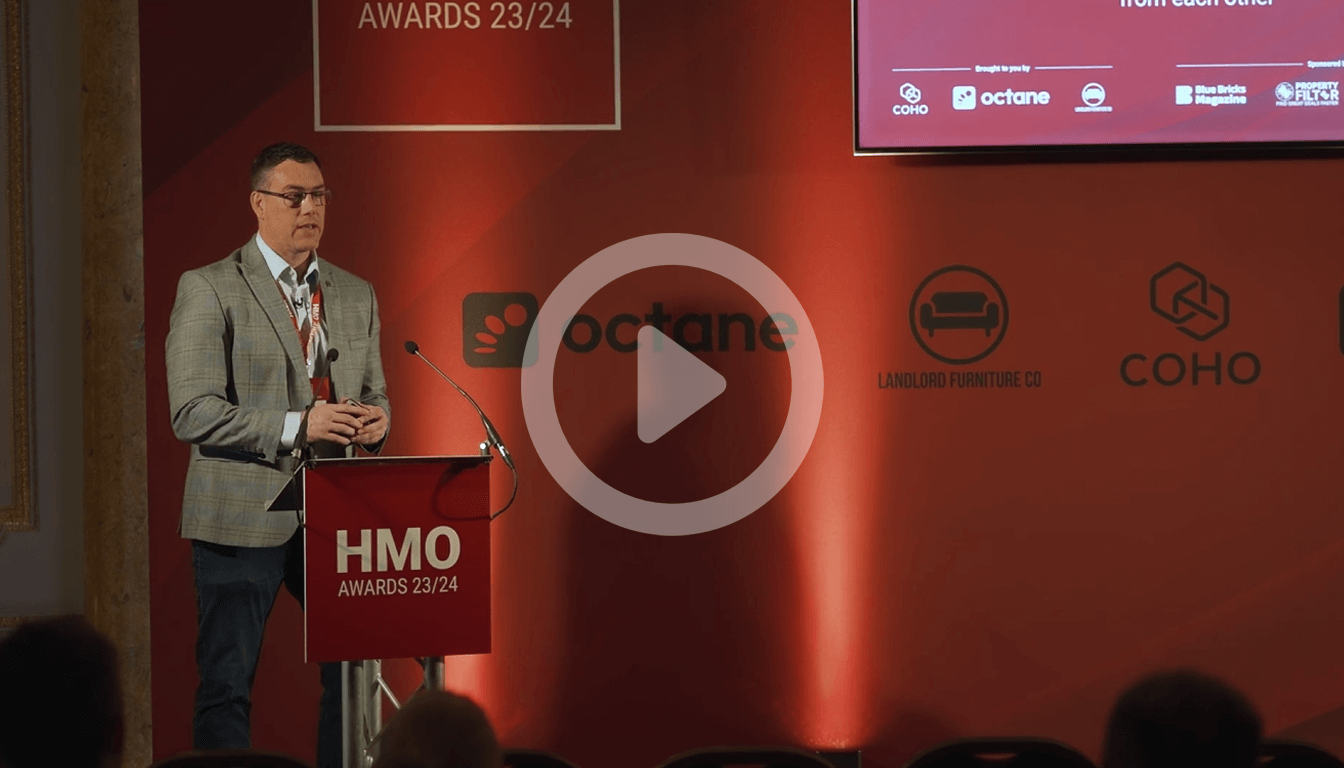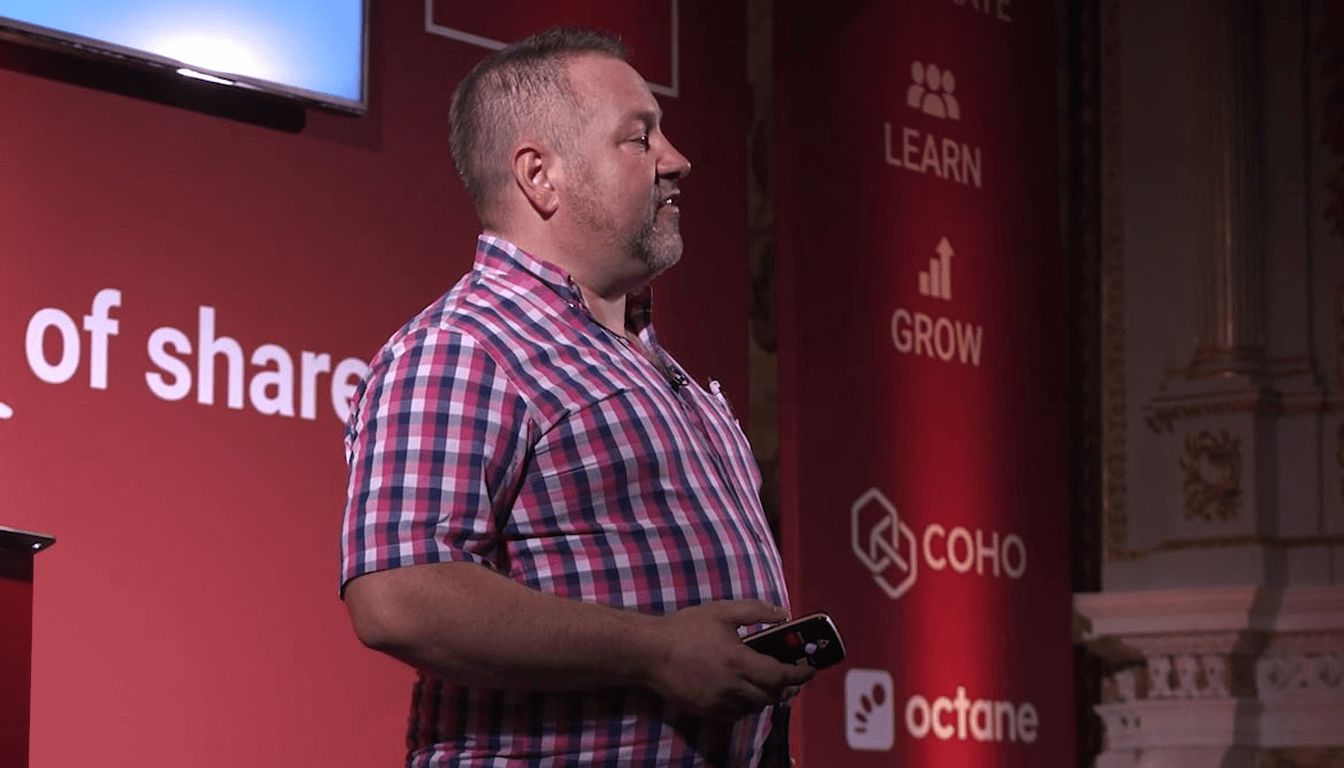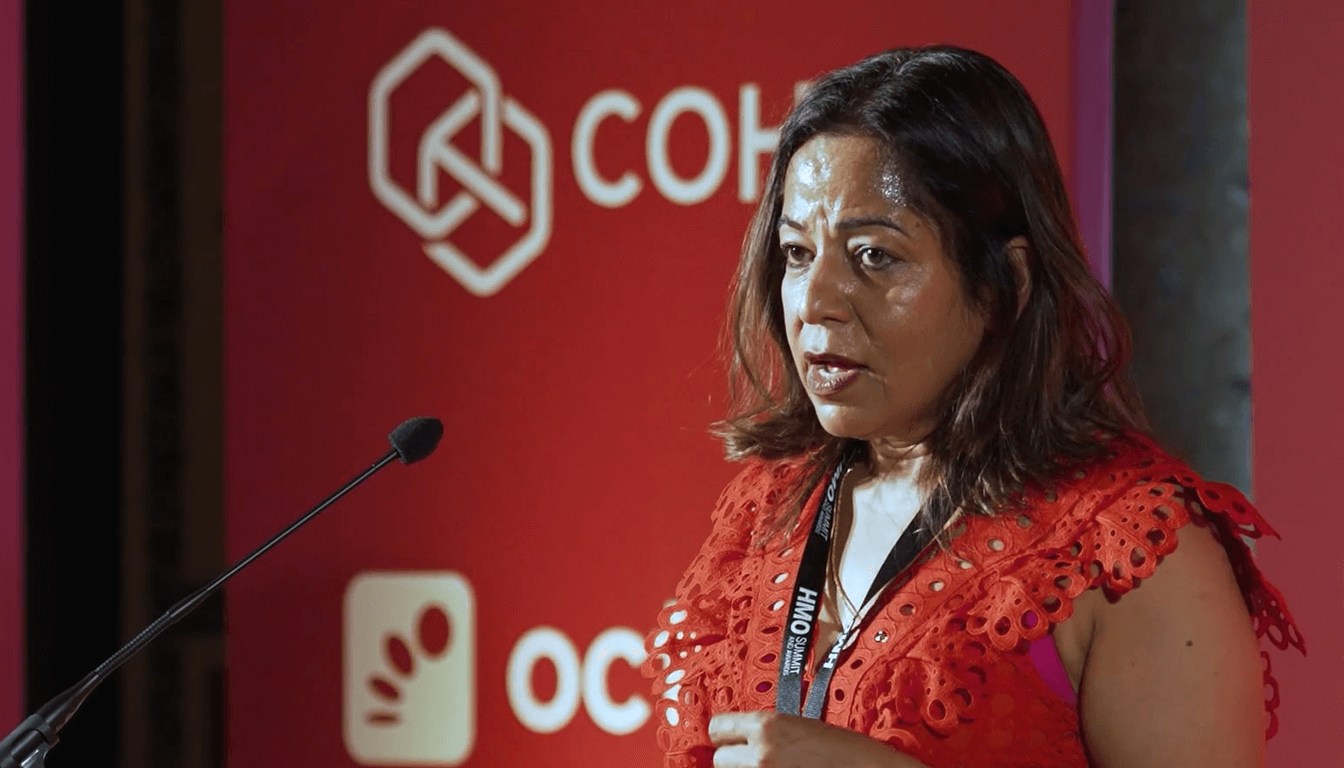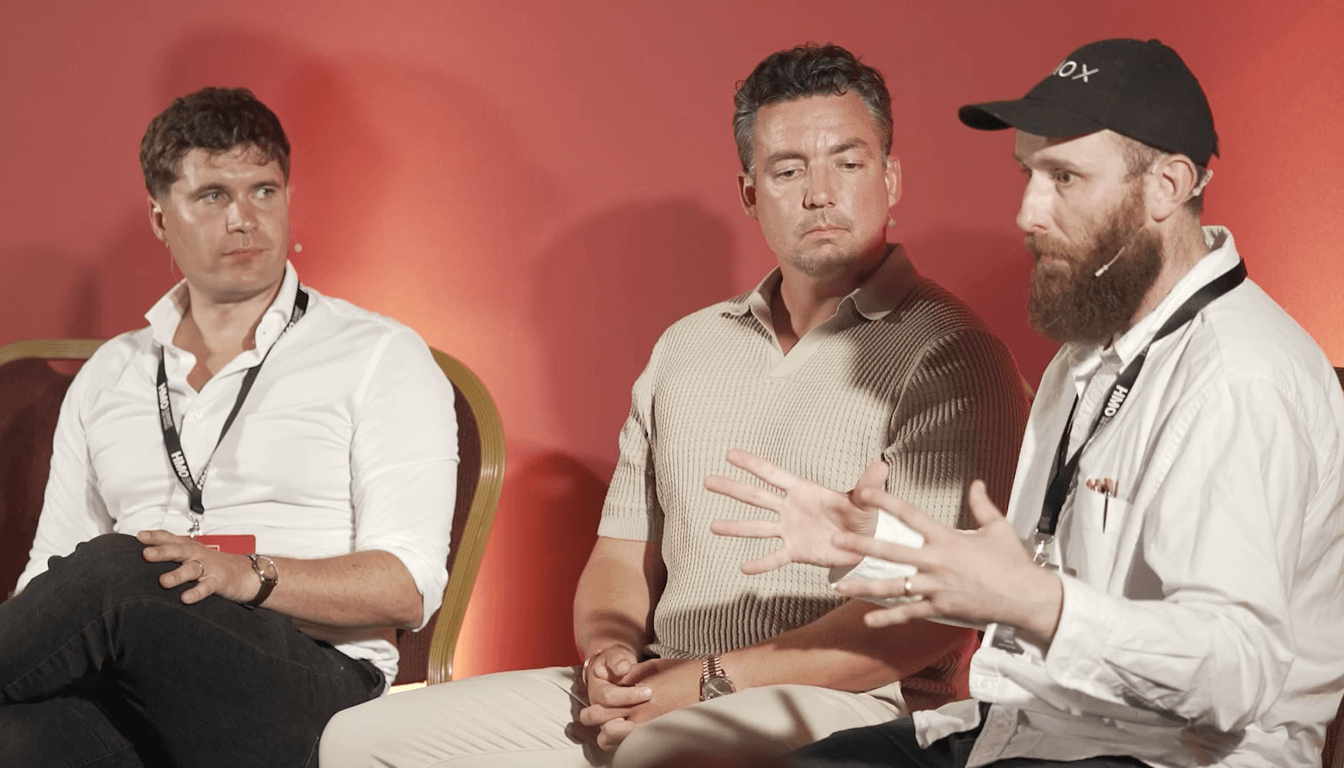In an industry often divided by operational style and property type, it’s rare to see a bridge built between the worlds of HMO (House in Multiple Occupation) management and traditional letting agencies. Yet, in his compelling talk at the HMO Summit 2023–24, John Paul—founder of Castledene Group and property industry veteran—did exactly that. Drawing from decades of experience growing agencies, acquiring businesses, and coaching over 300 agents across the UK, John mapped out how these two branches of the property management world can learn from one another, challenge norms, and build stronger, more agile businesses.
From Scaling Branches to Acquiring for a Pound
John’s story begins in the late 2000s when he launched the Castledene Group. Under his leadership, the company expanded to 12 branches and over 2,000 properties under management. Traditional agencies, he noted, have an easier time scaling through acquisitions, with John himself acquiring some businesses for as little as £1. In contrast, HMO operators often remain rooted in a single locality, making scale a challenge. This divergence in scalability set the stage for deeper insights into the structural differences between the two agency types.
Marketing: Two Different Worlds
When it comes to marketing, HMO agencies tend to excel at tenant acquisition—particularly students—but often lack a cohesive strategy for landlord acquisition. John emphasized that the client for any agency is the landlord, not just the tenant. While HMO operators invest heavily in Facebook ads and digital funnels to attract residents, their efforts to attract new landlords are often lacking or reactive.
Traditional agents, on the other hand, lean heavily on the portals—Rightmove, Zoopla, OnTheMarket—and direct mail, sometimes to a fault. Letters saying, “We noticed your property was recently listed…” have become a tired cliché in the industry. Though portal dependency offers predictable lead flow, it limits the scope and creativity of lead generation. Conversely, HMO agents are often better at engaging with digital channels and grassroots tactics but may lack a 24/7, always-on marketing system targeting landlord leads.
John’s call to action? Combine the proactive, digital-savvy tactics of HMOs with the broader client targeting and infrastructure that traditional agencies use. Develop real marketing strategies—not just isolated Facebook posts—and understand that consistent landlord engagement is key to scaling.
Compliance and Legal Gaps: Who Knows What?
A surprising and slightly controversial revelation in John’s talk was the widespread non-compliance among HMO agencies—particularly in terms of general legal obligations, such as website compliance and the Deregulation Act. Drawing from his research across over 80 agents, John reported that 95% of HMO websites he reviewed were non-compliant. This is a critical vulnerability.
He attributed this gap to origin stories: many HMO operators start as landlords, learning the ropes through experience rather than corporate training. They may be highly knowledgeable about HMO-specific regulations but miss out on broader legal requirements traditionally drilled into those who come up through firms like Connells or Reeds Rains.
Traditional agents, by contrast, often over-index on legal minutiae—debating the Renters Reform Bill over drinks and filling WhatsApp groups with legislative updates. But this legal rigor gives them a competitive edge in landlord trust and organizational credibility. The message to HMO agents was clear: don’t be the rogue operator who learns compliance the hard way. Join professional bodies like ARLA or Propertymark, tap into legal helplines, and make compliance part of your brand’s DNA.
People and Culture: The HMO Advantage
When it comes to internal culture, HMO agencies lead the way. Typically smaller, younger, and more mission-driven, these teams often prioritize emotional intelligence over rigid KPIs. John described a hiring philosophy among HMO agencies that emphasizes attitude over experience—a strategy that results in cohesive teams with low turnover.
Traditional agencies, especially large corporates, often suffer from toxic productivity: cultures driven by numbers over people, with minimal personal connection between colleagues. The result is higher churn, especially post-COVID, when employees began to prioritize work-life balance and fulfillment over paychecks.
John shared that in his own agency, team culture was prioritized even at the interview stage. Prospective employees were not just assessed—they were sold on the company’s values and workplace environment. He urged traditional agents to adopt a similar mindset: if you want to recruit and retain top talent, invest in culture. Build workplaces where people enjoy being, and the performance will follow.
Income Streams: Don’t Be Afraid to Charge
One of the clearest distinctions between HMO and traditional agencies lies in their revenue models. HMO agents typically charge higher property management fees—ranging from 12.5% to 20%—but tend to offer many services for free: court visits, section notices, tenancy renewals. These tasks, while critical, are often under-monetized, reducing profitability per unit managed.
Traditional agencies, on the other hand, adopt a fee-for-service model. Even with base management fees as low as 5%, they charge for inventories, inspections, renewals, and more. As long as the charges are transparent and agreed upon upfront, John argued there’s nothing unethical about charging extra. In fact, charging appropriately allows agencies to pay staff better, invest in tech, and create sustainable business models.
His advice to HMO operators? Know your worth. Don’t undervalue services that cost your team time and expertise. Build a fee structure that supports long-term growth, and communicate it clearly to your landlords.
Operational Growth: The Scale Gap
Scaling remains one of the biggest hurdles for HMO agencies. Because most operate hyper-locally and rely on personal connections to universities or communities, they often plateau in growth. External risks like council policy changes or new PBSA (Purpose-Built Student Accommodation) developments can wipe out major revenue streams.
Traditional agencies, however, scale more easily across regions and branches. John shared that during COVID alone, his agency doubled from six to twelve branches. The key enabler? He hired a managing director, allowing him to focus entirely on acquisitions. The traditional agency model, while slower in growth per unit (e.g., one house vs. a 6-bed HMO), allows for broader regional expansion.
For HMO operators, the lesson is to think beyond their comfort zones. Scaling might not mean opening a new branch—it could mean expanding into traditional lets, building a hybrid model, or acquiring small local agencies with compatible portfolios.
Merging the Best of Both Worlds
John concluded with a powerful call to unify the best of both models. HMOs can adopt the structure, legal rigor, and revenue diversification of traditional agencies. Traditional agencies can learn from the culture-first, marketing-agile, people-driven ethos of HMO operators.
He reminded the audience that building a scalable, resilient agency is about strategy—not just tactics. That means daily lead generation should be the heartbeat of the business, not something you do when you need landlords. That means compliance isn’t a checkbox, it’s your foundation. And that culture isn’t a perk—it’s your secret weapon in recruitment, retention, and reputation.
Final Takeaways for Forward-Thinking Agencies
- Lead generation is not optional. It’s foundational.
- Compliance is a competitive advantage—don’t leave it to chance.
- Culture is not just a “nice to have.” It’s your growth engine.
- Revenue should be diversified, transparent, and aligned with value delivered.
- Growth demands structure, leadership, and courage to step beyond your local market.
As the letting and HMO industries evolve, collaboration—not competition—will determine who thrives. Whether you manage five HMOs or five hundred family homes, the future belongs to those who learn from each other, adapt fast, and build with intention.
In an industry often divided by operational style and property type, it’s rare to see a bridge built between the worlds of HMO (House in Multiple Occupation) management and traditional letting agencies. Yet, in his compelling talk at the HMO Summit 2023–24, John Paul—founder of Castledene Group and property industry veteran—did exactly that. Drawing from decades of experience growing agencies, acquiring businesses, and coaching over 300 agents across the UK, John mapped out how these two branches of the property management world can learn from one another, challenge norms, and build stronger, more agile businesses.
From Scaling Branches to Acquiring for a Pound
John’s story begins in the late 2000s when he launched the Castledene Group. Under his leadership, the company expanded to 12 branches and over 2,000 properties under management. Traditional agencies, he noted, have an easier time scaling through acquisitions, with John himself acquiring some businesses for as little as £1. In contrast, HMO operators often remain rooted in a single locality, making scale a challenge. This divergence in scalability set the stage for deeper insights into the structural differences between the two agency types.
Marketing: Two Different Worlds
When it comes to marketing, HMO agencies tend to excel at tenant acquisition—particularly students—but often lack a cohesive strategy for landlord acquisition. John emphasized that the client for any agency is the landlord, not just the tenant. While HMO operators invest heavily in Facebook ads and digital funnels to attract residents, their efforts to attract new landlords are often lacking or reactive.
Traditional agents, on the other hand, lean heavily on the portals—Rightmove, Zoopla, OnTheMarket—and direct mail, sometimes to a fault. Letters saying, “We noticed your property was recently listed…” have become a tired cliché in the industry. Though portal dependency offers predictable lead flow, it limits the scope and creativity of lead generation. Conversely, HMO agents are often better at engaging with digital channels and grassroots tactics but may lack a 24/7, always-on marketing system targeting landlord leads.
John’s call to action? Combine the proactive, digital-savvy tactics of HMOs with the broader client targeting and infrastructure that traditional agencies use. Develop real marketing strategies—not just isolated Facebook posts—and understand that consistent landlord engagement is key to scaling.
Compliance and Legal Gaps: Who Knows What?
A surprising and slightly controversial revelation in John’s talk was the widespread non-compliance among HMO agencies—particularly in terms of general legal obligations, such as website compliance and the Deregulation Act. Drawing from his research across over 80 agents, John reported that 95% of HMO websites he reviewed were non-compliant. This is a critical vulnerability.
He attributed this gap to origin stories: many HMO operators start as landlords, learning the ropes through experience rather than corporate training. They may be highly knowledgeable about HMO-specific regulations but miss out on broader legal requirements traditionally drilled into those who come up through firms like Connells or Reeds Rains.
Traditional agents, by contrast, often over-index on legal minutiae—debating the Renters Reform Bill over drinks and filling WhatsApp groups with legislative updates. But this legal rigor gives them a competitive edge in landlord trust and organizational credibility. The message to HMO agents was clear: don’t be the rogue operator who learns compliance the hard way. Join professional bodies like ARLA or Propertymark, tap into legal helplines, and make compliance part of your brand’s DNA.
People and Culture: The HMO Advantage
When it comes to internal culture, HMO agencies lead the way. Typically smaller, younger, and more mission-driven, these teams often prioritize emotional intelligence over rigid KPIs. John described a hiring philosophy among HMO agencies that emphasizes attitude over experience—a strategy that results in cohesive teams with low turnover.
Traditional agencies, especially large corporates, often suffer from toxic productivity: cultures driven by numbers over people, with minimal personal connection between colleagues. The result is higher churn, especially post-COVID, when employees began to prioritize work-life balance and fulfillment over paychecks.
John shared that in his own agency, team culture was prioritized even at the interview stage. Prospective employees were not just assessed—they were sold on the company’s values and workplace environment. He urged traditional agents to adopt a similar mindset: if you want to recruit and retain top talent, invest in culture. Build workplaces where people enjoy being, and the performance will follow.
Income Streams: Don’t Be Afraid to Charge
One of the clearest distinctions between HMO and traditional agencies lies in their revenue models. HMO agents typically charge higher property management fees—ranging from 12.5% to 20%—but tend to offer many services for free: court visits, section notices, tenancy renewals. These tasks, while critical, are often under-monetized, reducing profitability per unit managed.
Traditional agencies, on the other hand, adopt a fee-for-service model. Even with base management fees as low as 5%, they charge for inventories, inspections, renewals, and more. As long as the charges are transparent and agreed upon upfront, John argued there’s nothing unethical about charging extra. In fact, charging appropriately allows agencies to pay staff better, invest in tech, and create sustainable business models.
His advice to HMO operators? Know your worth. Don’t undervalue services that cost your team time and expertise. Build a fee structure that supports long-term growth, and communicate it clearly to your landlords.
Operational Growth: The Scale Gap
Scaling remains one of the biggest hurdles for HMO agencies. Because most operate hyper-locally and rely on personal connections to universities or communities, they often plateau in growth. External risks like council policy changes or new PBSA (Purpose-Built Student Accommodation) developments can wipe out major revenue streams.
Traditional agencies, however, scale more easily across regions and branches. John shared that during COVID alone, his agency doubled from six to twelve branches. The key enabler? He hired a managing director, allowing him to focus entirely on acquisitions. The traditional agency model, while slower in growth per unit (e.g., one house vs. a 6-bed HMO), allows for broader regional expansion.
For HMO operators, the lesson is to think beyond their comfort zones. Scaling might not mean opening a new branch—it could mean expanding into traditional lets, building a hybrid model, or acquiring small local agencies with compatible portfolios.
Merging the Best of Both Worlds
John concluded with a powerful call to unify the best of both models. HMOs can adopt the structure, legal rigor, and revenue diversification of traditional agencies. Traditional agencies can learn from the culture-first, marketing-agile, people-driven ethos of HMO operators.
He reminded the audience that building a scalable, resilient agency is about strategy—not just tactics. That means daily lead generation should be the heartbeat of the business, not something you do when you need landlords. That means compliance isn’t a checkbox, it’s your foundation. And that culture isn’t a perk—it’s your secret weapon in recruitment, retention, and reputation.
Final Takeaways for Forward-Thinking Agencies
- Lead generation is not optional. It’s foundational.
- Compliance is a competitive advantage—don’t leave it to chance.
- Culture is not just a “nice to have.” It’s your growth engine.
- Revenue should be diversified, transparent, and aligned with value delivered.
- Growth demands structure, leadership, and courage to step beyond your local market.
As the letting and HMO industries evolve, collaboration—not competition—will determine who thrives. Whether you manage five HMOs or five hundred family homes, the future belongs to those who learn from each other, adapt fast, and build with intention.

